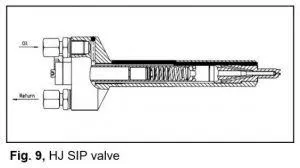Nov . 28, 2024 09:21 Back to list
Dual-Action Hydraulic Cylinder Solutions for Various Applications and Industries
Understanding Two-Way Hydraulic Cylinder Products
Hydraulic cylinders are critical components in various industrial, agricultural, and automotive applications, and among their many configurations, two-way hydraulic cylinders play a pivotal role. These cylinders are designed to extend and retract the piston rod, allowing for movement in both directions. This functionality makes them indispensable in applications where controlled motion is essential.
Working Principle
The basic operation of a two-way hydraulic cylinder involves the principles of hydraulics, particularly Pascal's Law, which states that a change in pressure applied to an enclosed fluid is transmitted undiminished throughout the fluid. In a two-way hydraulic cylinder, hydraulic fluid is directed to either side of the piston, enabling the movement of the piston and the attached rod.
When hydraulic fluid is pumped into one side of the cylinder, the pressure pushes the piston in one direction, causing the rod to extend. Conversely, when the fluid is directed to the opposite side, the piston retracts, pulling the rod back into the cylinder. This bidirectional movement enables a wide range of applications, from lifting and pushing to pulling and lowering.
Applications
Two-way hydraulic cylinders find their utility in many sectors
1. Construction Equipment In excavators and loaders, two-way hydraulic cylinders facilitate tasks such as lifting heavy loads and extending booms and arms. 2. Agriculture These cylinders are crucial in the operation of agricultural equipment, including plows and harvesters, where precise control of movement can significantly enhance productivity.
3. Automotive In vehicles, two-way hydraulic cylinders can be involved in braking systems, where they aid in the smooth operation of brake calipers, ensuring safety during vehicle operation.
4. Marine Industry They are used for steering mechanisms and other applications that require reliable movement control in boats and ships.
Advantages
Two-way hydraulic cylinders offer several advantages
two-way hydraulic cylinder products

- Efficiency The design allows for quick and efficient movement in both directions, often requiring less energy compared to other actuation methods. - Precision The ability to control the flow of hydraulic fluid allows for precise positioning of the load, which is essential in many industrial processes.
- Durability Typically constructed from high-quality materials, two-way hydraulic cylinders are built to withstand harsh conditions, ensuring a long service life with minimal maintenance.
- Versatility Their adaptability to various applications makes them an integral part of many systems, from simple machinery to complex industrial setups.
Choosing the Right Cylinder
When selecting a two-way hydraulic cylinder, several factors should be considered
1. Size and Stroke Length Determining the appropriate bore size and stroke length is critical for matching the cylinder to its intended application.
2. Pressure Rating Understanding the pressure requirements of the application is vital, as cylinders need to endure the operational pressures without failure.
3. Temperature Range The operating temperature can affect fluid viscosity and performance; therefore, selecting a cylinder suitable for the specific temperature environment is essential.
4. Mounting Options Different applications may require different mounting configurations, so it's important to consider how the cylinder will be installed and utilized.
Conclusion
Two-way hydraulic cylinders are fundamental tools across various industries, thanks to their efficient operation and versatility. Understanding their functionality, applications, advantages, and selection criteria is essential for maximizing their performance in any project. Investing in the right type of hydraulic cylinder can lead to enhanced productivity, improved safety, and reduced operational costs. As technology advances, the design and functionality of these cylinders continue to evolve, promising even greater efficiency and reliability in the future. Whether in heavy machinery, agricultural equipment, or automotive systems, two-way hydraulic cylinders will remain a vital component of modern engineering.
-
Fork Lift Power Units - Hebei Shenghan | Efficiency, Reliability
NewsJul.13,2025
-
1.5-Ton Turbocharged Cylinder-Hebei Shenghan|Hydraulic Solution,Energy Efficiency
NewsJul.13,2025
-
Auto Hoist Power Units-Hebei Shenghan|Efficiency&Industrial Lifting
NewsJul.13,2025
-
Double Acting Power Units-Hebei Shenghan|Hydraulic Solutions,Industrial Efficiency
NewsJul.13,2025
-
1.5 Ton Lifting Cylinder 70/82-40-290-535 - High-Performance Hydraulic Solution | Hebei Shenghan
NewsJul.13,2025
-
Fork Lift Power Units - Hebei Shenghan | Efficiency&Reliability
NewsJul.13,2025
